NASA's Perseverance rover has been on Mars 100 days. Its best photos show mysterious rocks, false rainbows, and helicopter flights.
Morgan McFall-Johnsen

- NASA's Perseverance rover has spent 100 days on Mars.
- Perseverance has beamed photos from the red planet back to Earth almost daily.
- The best pictures show mystery rocks, river-delta cliffs, and the Ingenuity helicopter in flight.
As of Tuesday, NASA's Perseverance rover has spent 100 days on the red planet.
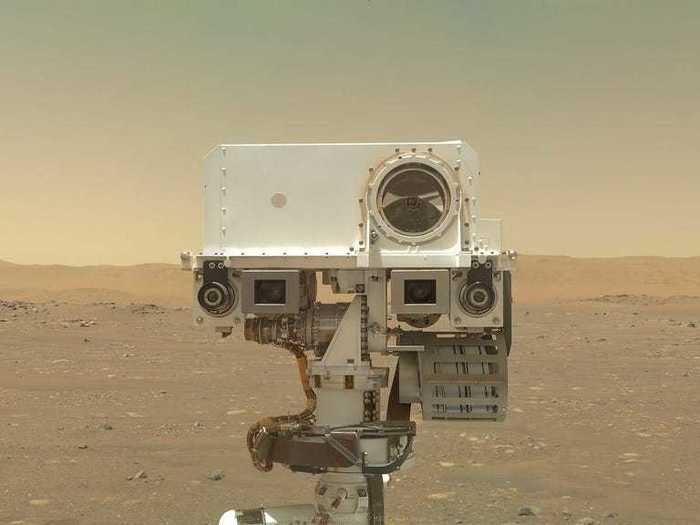
It landed in Mars' Jezero Crater on February 18. If life ever existed on the planet, this ancient lake bed may hold fossils of ancient alien microbes.
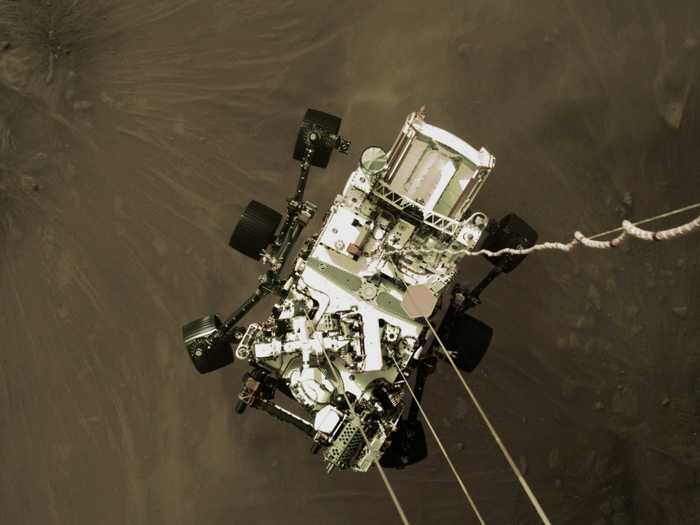
Cameras aboard the rover and on the jetpack that lowered it to the Martian surface captured the first-ever video footage of a Mars landing.
Since then, Perseverance has built up a library of stunning photos.
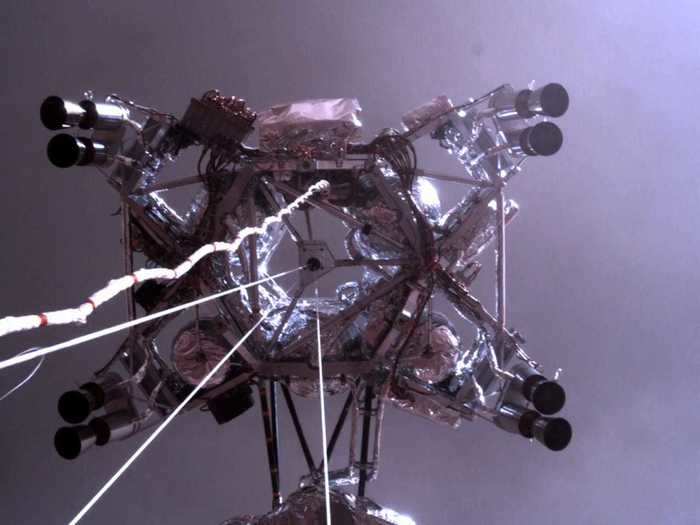
NASA has been sharing new images from the rover almost every day, as Perseverance beams them back to Earth.
The rover began to photograph its surroundings shortly after landing, capturing Jezero Crater's cliffs, boulder fields, and sand dunes.

The rover is equipped with 23 cameras. Some help it navigate Martian terrain by spotting potential hazards like large rocks or trenches. Others allow human operators on Earth to check that the rover's parts are in good shape.
The Perseverance team stitched together 142 images that Perseverance captured to create a panorama of the area.
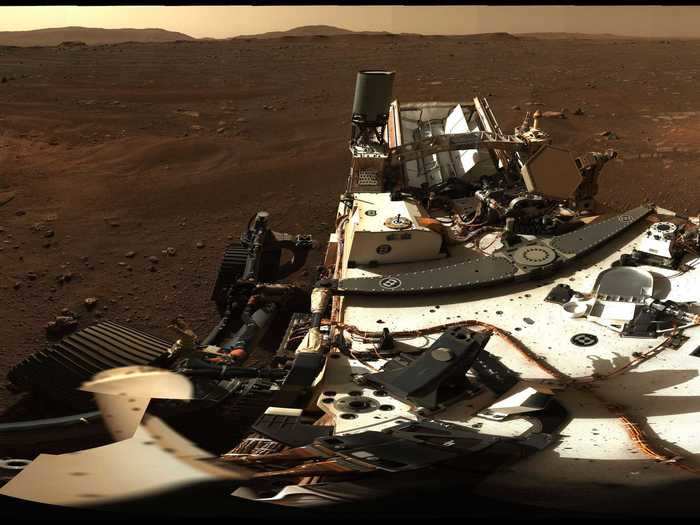
Within a month, the rover spotted its first dust devil.
Mars doesn't have rainbows, but Perseverance captured a lens flare that looked like one.
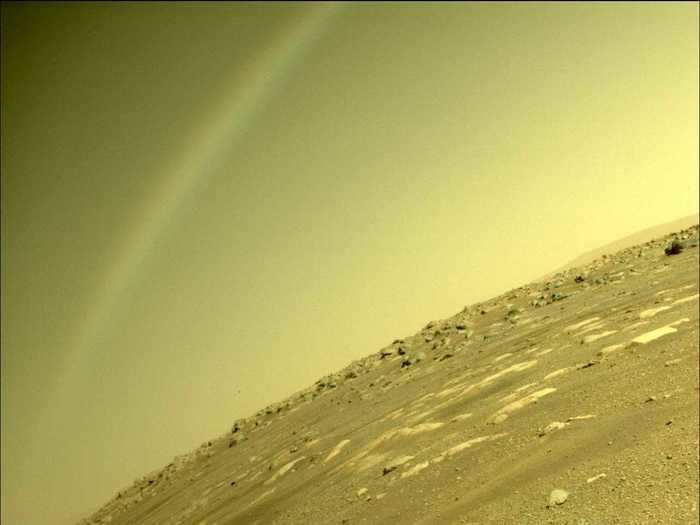
"Rainbows aren't possible here," NASA tweeted from its Perseverance account. "Rainbows are created by light reflected off of round water droplets, but there isn't enough water here to condense, and it's too cold for liquid water in the atmosphere. This arc is a lens flare."
To test its laser tool, the rover zapped a nearby rock and photographed the line of dots it left on the surface.
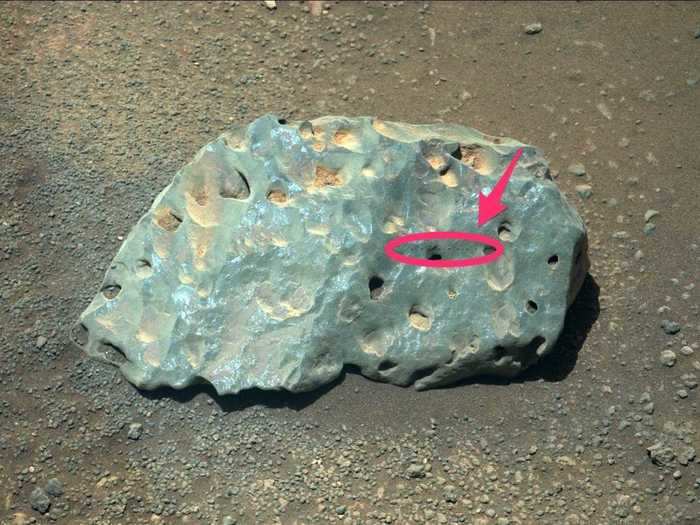
Perseverance uses a laser to vaporize the dust on rocks in order to study the minerals inside.
Perseverance even spotted its own shadow.
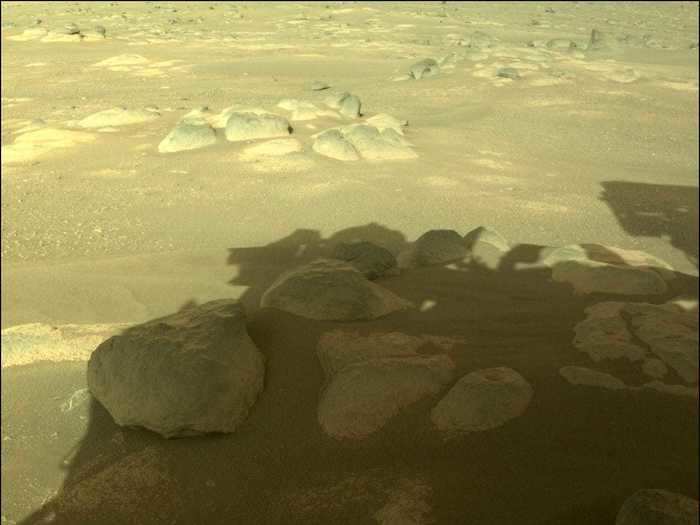
The rover's cameras have also documented the Ingenuity helicopter's journey, starting from its descent from the rover's belly onto the Martian surface.
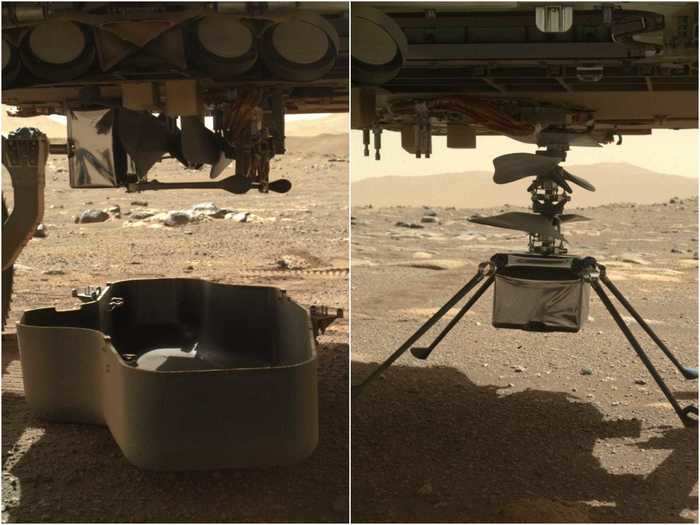
The helicopter is a technology demonstration — NASA engineers wanted to see if they could fly it in the thin Martian atmosphere. Because it has just 1% the density of Earth's atmosphere, that's the Earth equivalent of flying at three times the height of Mount Everest.
After Ingenuity emerged, Perseverance looked back as it backed away, leaving the 4-pound drone to survive its first frigid Martian night alone.
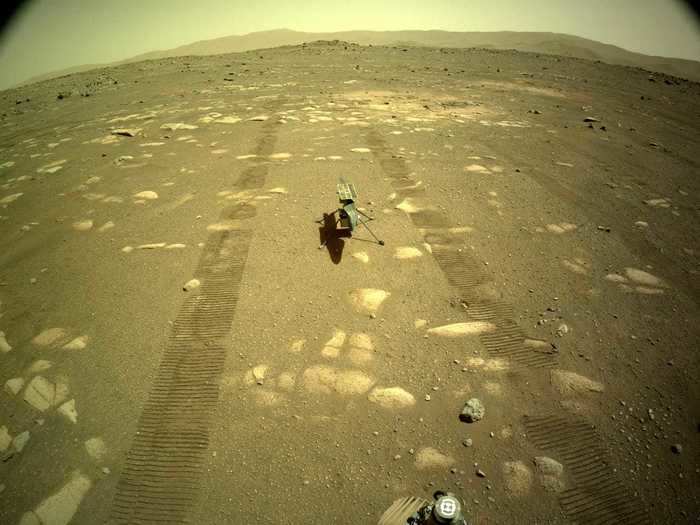
Nighttime temperatures on Mars can plunge as low as negative 130 degrees Fahrenheit, but Ingenuity's insulation and heaters have kept it warm enough to survive.
Perseverance took an impressive selfie with Ingenuity before driving to the overlook from which it would later watch the helicopter fly.
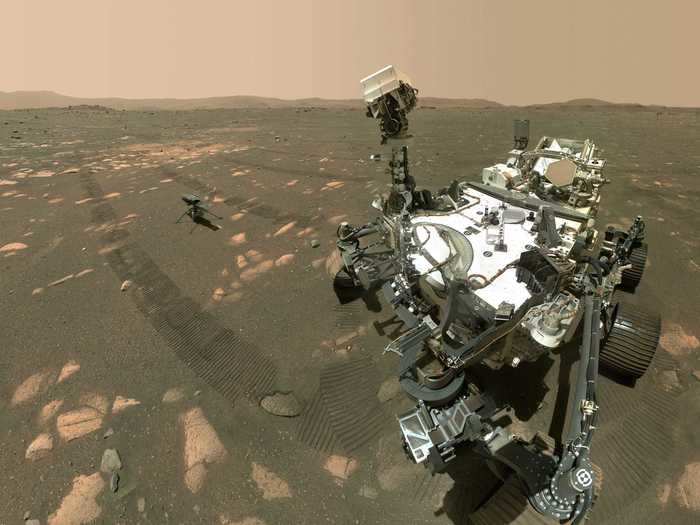
The selfie is actually a mosaic of 62 individual images.
When Ingenuity lifted itself from the red dust for the first time and made history, Perseverance was watching.
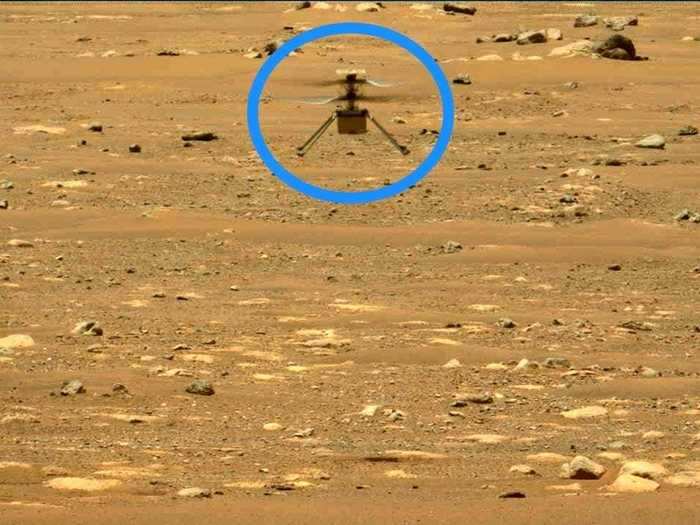
These were the first controlled, powered flights ever conducted on another planet.
The rover captured full video of the helicopter's first flights, too.
Ingenuity performed so well during its first three flights that NASA gave it an extended mission. Now it's flying to new airfields and scouting uncharted territory — testing out tasks that NASA hopes to accomplish with future Mars helicopters.
Now that Ingenuity's initial flights are done, Perseverance has begun its primary science mission.
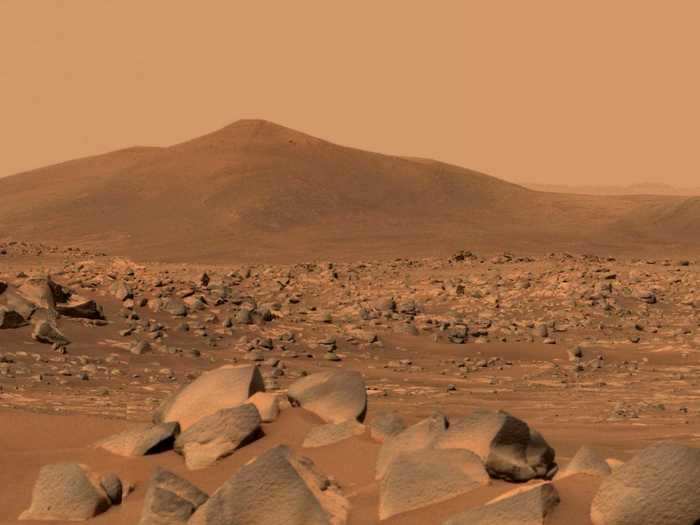
The rover's main goal is to collect samples of Martian rock that could contain hints of ancient microbial life on Mars. It will cache these samples for a future NASA mission to bring back to Earth.
The rover's zooming cameras have begun studying mysterious rocks, starting with the "zoom test" pictured below.
Once it's done studying those rocks, Perseverance is set to drive towards the cliffs of the river delta that once fed Lake Jezero.

There, scientists expect to find soil and rock rich with ancient river deposits of mud and clay — and perhaps fossils of microbes trapped inside them.
Aria Bendix contributed reporting.
READ MORE ARTICLES ON
Popular Right Now
Popular Keywords
Advertisement